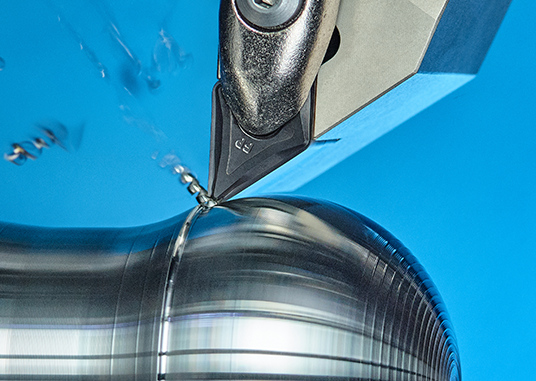и широкий выбор высококачественных инструментов


• Sharp edge and side-sloping edge shape reduce cutting resistance and improve surface finish
FP chip Breaker (Negative)
Mild steel (low carbon steel), which is used in automobiles, general machinery parts, and more, has a low carbon content of 0.13~0.2%. This causes chips to be generated in a continuous flow during machining. Therefore, if these chips are not properly broken into appropriate sizes, the long chips can cause scratches on the workpiece and wrap around the tool or workpiece, making it difficult to use in automated processes.
KORLOY has newly launched the FP chip breaker, which delivers excellent performance in finishing operations requiring high surface finish and machining dimensional accuracy, especially in automated processes for materials like Mild steel that demand stable chip control.
The FP chip breaker features a two-step chip breaker shape, enabling effective chip curling from ultra finishing (ap 0.3 mm) - finishing (ap 1 mm) applications. Its first-step chip breaker shape, optimized for copying and taper machining, provides stable chip control in finishing complex shapes.
Furthermore, the sharp edge reduces cutting load and minimizes vibration during machining, resulting in an excellent surface finish.
With a design optimized for finishing external Turning and combination with various grades, the FP chip breaker prevents from chip clogging in Mild steel as well as in Carbon steel, Alloy steel, and Bearing steel, providing the best solution for customers’ needs with high surface finish and machining dimensional accuracy.

• Excellent chip control in finishing to ultra finishing applications
- Two-step chip breaker shape
• Machining stability in copying and taper machining
- Optimized design of the first-step chip breaker design for copying and taper machining
• Good surface finish
- Minimized machining vibration with a sharp edge
- Excellent chip segmentation
• Optimized for high-quality automated production lines
- Stable chip control
- Higher machining dimensional accuracy compared to existing M-grade
_영문.png)
_영문.png)



_01.jpg)
_02.jpg)
_03.jpg)
_04.jpg)

